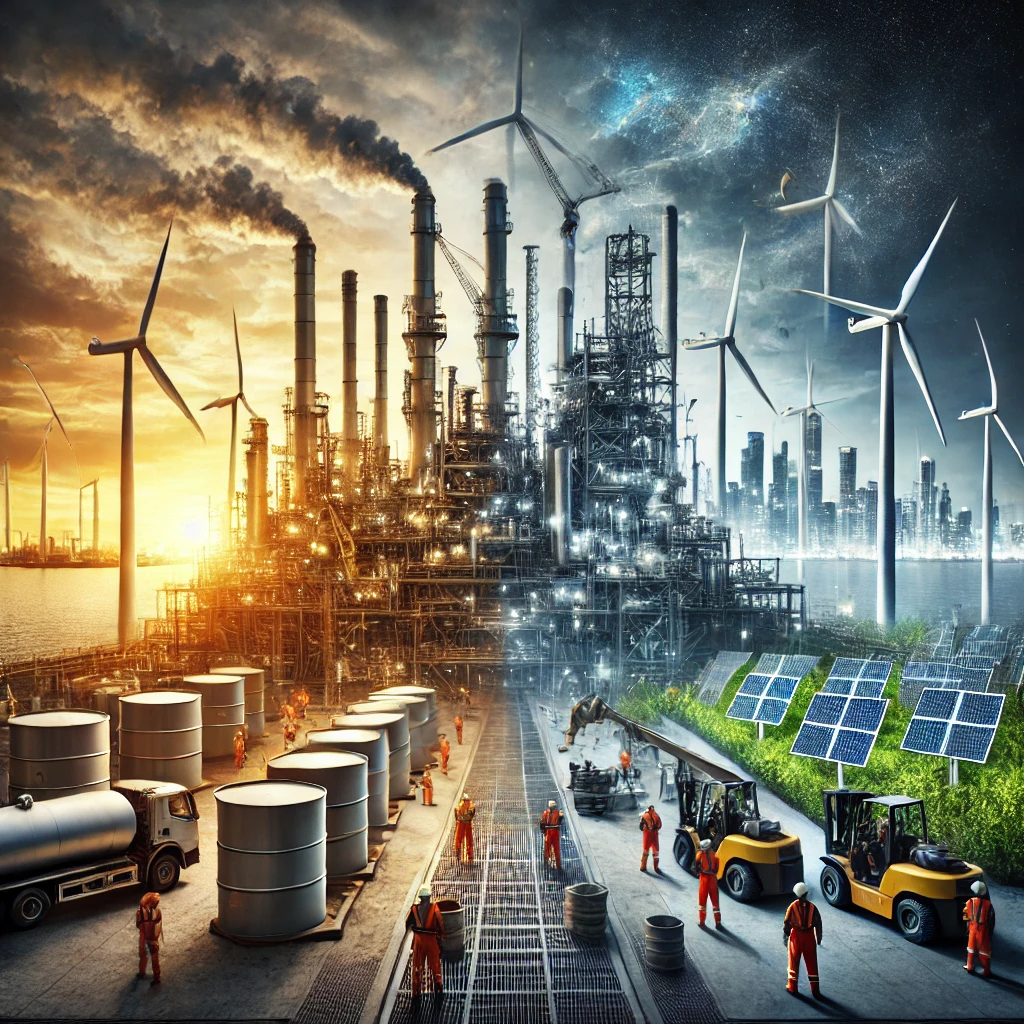In recent years, the global push for decarbonization and renewable energy has dominated the narrative in the energy sector. Oil and gas companies faced immense pressure to “go green,” leading to billions of dollars invested in renewables, ambitious net-zero pledges, and a public shift away from fossil fuels. However, as the dust settles, the reality of the energy transition is proving more complex than anticipated.
At events like ADIPEC 2023 in Abu Dhabi, the decarbonization of the oil industry was the central theme. Yet, the hard truths of energy economics, geopolitics, and market demands are now forcing a recalibration. Here’s why the energy transition is facing headwinds, and why oil companies are shifting their strategies:
1. Global Oil & Gas Demand Remains Strong
Despite the rise of renewables, global demand for oil and gas continues to grow. According to the International Energy Agency (IEA), global oil demand is set to accelerate from 840 kb/d in 2024 to 1.1 mb/d next year, lifting consumption to 103.9 mb/d in 2025. Emerging economies, particularly in Asia, are driving this demand as they industrialize and urbanize.
Natural gas, often seen as a “bridge fuel” in the energy transition, is also experiencing robust demand. Though global natural gas markets are set to remain tight in 2025, demand continues to rise and supply expands more slowly than before the pandemic and energy crisis, according to the IEA’s latest quarterly Gas Market Report. The growth is set to be largely underpinned by markets in Asia, with the region expected to account for over half of the rise in global gas demand.
2. Renewables Have Not Been as Profitable as Expected
While renewable energy capacity has grown significantly, profitability remains a challenge. Oil majors like BP, Shell, and TotalEnergies invested heavily in wind, solar, and biofuels, but returns have been underwhelming.
For example: BP has transferred all its offshore wind projects into a joint venture as it shifts its focus away from renewables and toward oil and gas ventures, citing rising costs and regulatory hurdles. Shell also announced plans to scale back its renewables division after failing to meet profit targets.
Offshore wind is one of the major sources of renewable energy that Europe is counting on to decarbonise electricity production, but in recent years projects have been mired by soaring costs and supply chain issues.
Renewables face inherent challenges, including high upfront costs, supply chain disruptions, and reliance on government subsidies. These factors have made it difficult for oil companies to achieve the same margins they enjoy in their traditional oil and gas businesses.

3. Energy Security Concerns Have Taken Center Stage
The geopolitical landscape has shifted dramatically since Russia’s invasion of Ukraine in 2022. Europe’s energy crisis exposed the vulnerabilities of over-reliance on intermittent renewables and imported energy. Countries like Germany and the UK were forced to revert to coal and extend the life of nuclear plants to ensure grid stability.
This has underscored the importance of reliable, baseload energy sources like oil and gas. As Fatih Birol, Executive Director of the IEA, noted, “Energy security is the foundation of energy transitions.” Without a stable energy supply, economic and social stability are at risk, making the complete phase-out of fossil fuels unrealistic in the short term.
4. Investors Are Prioritizing Profits Over Sustainability
Shareholders in oil companies are increasingly vocal about prioritizing returns over costly sustainability experiments. In 2023, ExxonMobil and Chevron faced pressure from activist investors to focus on their core businesses rather than renewables.
This sentiment was reflected in two major deals: ExxonMobil’s $60 billion acquisition of Pioneer Natural Resources and Chevron’s $53 billion purchase of Hess Corporation
These acquisitions signal a clear shift back to oil and gas, as companies seek to capitalize on high commodity prices and strong demand.
A Slower, More Pragmatic Transition
The energy transition is not dead, but it is undoubtedly slowing down. Oil companies are refocusing on their core competencies while maintaining a cautious approach to renewables. For instance:
BP has scaled back its 2030 production cut targets, now aiming for a 25% reduction in oil and gas output by 2030, down from its earlier goal of 40%. Shell has announced it will maintain oil production at current levels until 2030, while reducing investments in renewables.
This recalibration reflects a broader recognition that the transition to a low-carbon economy will take longer than initially anticipated. Oil and gas will remain critical to meeting global energy needs for decades to come, even as renewables gradually expand their share of the energy mix.
Is This a Step Backward?
Critics argue that scaling back on renewables undermines climate goals and delays the transition to a sustainable energy future. However, proponents of the oil industry’s pivot point to the importance of energy security, economic viability, and the need for a balanced approach.
The reality is that the energy transition is a marathon, not a sprint. While the momentum may have slowed, the long-term trajectory toward cleaner energy remains intact. Oil companies are adapting to the current realities of the market, but the pressure to decarbonize will only grow as climate policies tighten and renewable technologies improve.
The Bottom Line
The energy transition is far from straightforward. Oil companies are navigating a complex landscape of growing demand, profitability challenges, and geopolitical uncertainties. Their recent pivot back to oil and gas reflects a pragmatic response to these realities.
While this may seem like a step backward to some, it highlights the need for a more nuanced and realistic approach to the energy transition. The path to a sustainable future will require balancing immediate energy needs with long-term climate goals—a challenge that demands collaboration, innovation, and patience from all stakeholders.
In the end, the energy transition isn’t just about replacing fossil fuels with renewables. It’s about creating a resilient, diversified energy system that can meet the needs of a growing global population while addressing the urgent threat of climate change. This will require hard choices, strategic investments, and a clear-eyed understanding of both the opportunities and limitations ahead.
Author: Prince Agyapong, Energy and Extractives News Writer at The Vaultz News
READ ALSO: OPEC+ Holds Oil Strategy Amid Trump Price Pressure



















